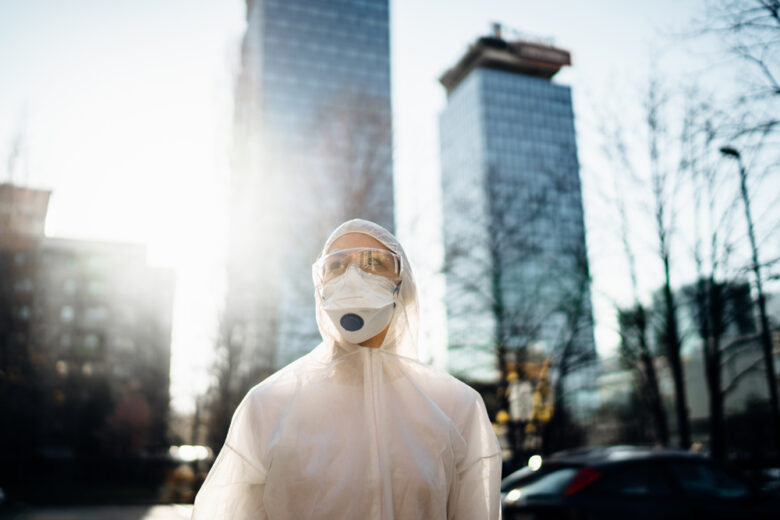- Products
- Video
- Events
- News
- Landing
- Pages
Waarschuwing! De inhoud van deze pagina is alleen beschikbaar in de volgende talen: Engels
There are many types of respirator masks with facial filters, categorized according to different classification systems all over the world, but very similar to each other. Respirators are a key element of PPE (Personal Protective Equipment) for healthcare professionals and doctors. They are masks with a filtering power in the inspiratory phase. They prevent the spread of infecting particles into the surrounding environment, thanks to 5 filtering layers. They usually fit very close to the face.

The most commonly used respirator masks, N95 and FFP2, are equivalent for filtering non-oil-based particles, like bioaerosols, i.e. viruses as Covid-19. The letter before the number isn’t relevant to the level of protection. The number is instead really important: the higher the number, the better the filtration efficiency. So an N100 mask will be more effective at stopping micro particles than an N95.

The following are the most common respirators for medical health staff in the main areas of the world:

The Therapeutic Goods Administration (TGA) recommends not using face masks that are past their shelf life3. However, in emergency times it happens very often. In this context we are talking about non-disposable respirators, therefore exclude surgical masks.

The Italian association of health hygienists has drawn up a scientific contribution on the correct use of respirators for doctors, nurses and health personnel in general.4
It says “extended use is better than re-use”, as it implies less need to touch the PPE and consequently less risk of contact infection from viruses and bacteria. A fundamental requirement for extensive use is that the PPE must maintain its characteristics and functionality unchanged. It is strongly recommended to dispose of PPE after operations with a high risk of contamination, such as certain diagnoses of Coronavirus or other virulent diseases. The PPE cannot in any case be used by physicians or nurses more than 5 times and 8 consecutive hours. Respirator masks like N95 or FFP2 can’t be traditionally washed, but they need special treatments not to lose their protective texture.
It is really essential to invest in sterilization and decontamination methods for certified respirators for many reasons. First of all, to avoid having to face other emergencies without the availability of the necessary PPE, as it happened with Sars-Cov-2. Second, to significantly reduce health costs, as highlighted in the graph in this article. Last but not least, to protect the environment.

Hospital and medical centers’ waste has increased significantly due to the coronavirus emergency. Most of the waste is made up of PPE. The problem of the sterilization of waste and its disposal is obvious, also considering that it is added to all domestic garbage.
In addition to the increase in the volume of medical waste, there is also a further pollution problem, because potentially infected waste must first be disinfected, then stored in special packaging and finally incinerated.
To reduce the environmental impact, decontamination systems such as DeconBoxTM have been developed to safely allow extending the life of the respirators and caring for the environment.

The use of these purifying machines can become a good practice and an essential resource used daily in hospitals and private clinics all over the world. Sars-Cov-2, despite its drama, has confronted many countries around the world with the same problems at the same historical moment. Good practices in the defense of the planet and sustainable medicine can become a common thread that unites many scientific communities in the various countries of the world.
1) Centers for Disease Control and Prevention.
3) Advice on surgical masks and gowns during COVID-19.
4) The Italian association: a scientific contribution to the correct use of respirators.
Log in op uw Comecer-account om de gegevensbladen te downloaden
Log In Lost PasswordNieuws en uitnodigingen voor evenementen en beurzen in uw Postvak IN
Abonneren

